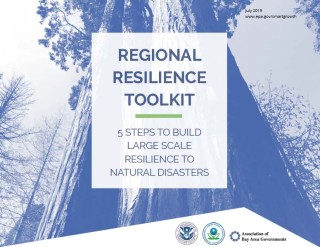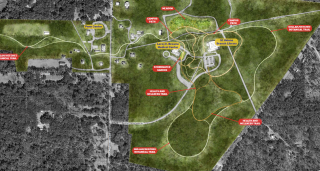Regional Resilience Toolkit
Since disasters occur at a regional scale, coordinating resilience planning across multiple jurisdictions can help make communities safer. In support this, EPA and the Federal Emergency Management Agency (FEMA) developed and published the Regional Resilience Toolkit: 5 Steps to Build Large-Scale Resilience to Natural Disasters (pdf) .
The Regional Resilience Toolkit promotes an inclusive, coordinated approach to disaster planning. It is designed to help multiple jurisdictions and levels of government, as well as non-governmental partners and local groups, collaborate on regional-scale actions. It can be used in any region or community — no matter the size, location, capacity, or hazard.
The toolkit includes five steps:
- Engage.
- Assess.
- Act.
- Fund.
- Measure.
Guided by core community values and emphasizing the need for action, it addresses multiple hazards - such as wildfires, drought, hurricanes, extreme heat, flooding, earthquakes, landslides, sea level rise, and winter storms. The flexibility of the toolkit also allows for the user to jump in at any point in the process, depending on their progress in resilience planning.
The toolkit was developed following several technical assistance projects in California from 2013 and 2018. EPA and FEMA partnered with the Metropolitan Transportation Commission/Association of Bay Area Governments to work with three regions: the San Francisco Bay Area, the Central Coast region, and the Mt. Shasta area of northern California. The team worked closely with these three regions to support planning for large-scale action for disaster resilience. Following these projects, EPA, FEMA, and MTC/ABG created the toolkit to provide a model for other communities.
In 2020 and 2021, EPA also used the toolkit to help multiple jurisdictions come together to identify shared natural disaster risks and develop a common action plan for the region, through its Building Blocks for Regional Resilience program.
Designed to fulfill requirements for FEMA’s Local Hazard Mitigation Plan approval and updates, the toolkit also supports the National Mitigation Investment Strategy.


